Can I Put 100 Gas in My Car
From the July 2019 issue of Car and Driver.
The trend that's changing the way America moves is far subtler than any good click-generating headline would have you believe. Electric vehicles are decades away from showing up en masse at country-music concerts, county fairs, and Tractor Supply parking lots. True go-anywhere autonomy will prove as elusive as finding satisfying vegan bacon. The trend we're really living is the story of smaller engines working harder, in everything from family crossovers to six-figure autobahn barges. Downsized but hardly diminished, many of these shrunken engines are more powerful than their predecessors, thanks to turbocharging, variable valve timing and lift, direct injection, and the advanced computer controls tying these all together.
Today's engines are so sophisticated that even mainstream nonperformance vehicles can benefit from running on higher-octane premium fuel. Vehicles such as the Ford Escape and Mazda 6 are advertised with power figures made on 93-octane fuel, although both companies are quick to note that these vehicles will happily run on 87. What automakers rarely say is what, precisely, are the benefits of paying for premium. That ambiguity can be expensive. Premium gas tracked at $0.59 more per gallon than regular unleaded as of this writing. In a vehicle averaging 25 mpg and traveling 15,000 miles a year, that amounts to a $354 annual surcharge for using the more expensive stuff.
Raising the octane rating (also known as the anti-knock index) doesn't change the energy content of a gallon of gasoline. A higher octane rating indicates greater resistance to knock, the early combustion of the fuel-air mixture that causes cylinder pressure to spike. When higher-octane fuel is flowing through its injectors, the engine controller can take advantage of the elevated knock threshold and dial in more aggressive timing and higher boost pressures to improve performance.
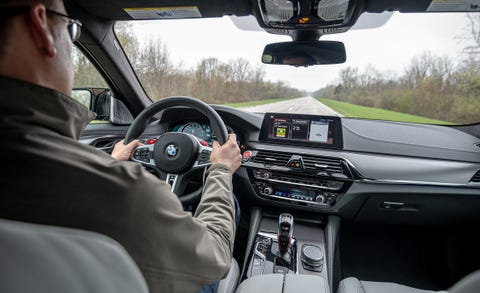
Marc Urbano Car and Driver
To understand how higher octane affects acceleration and efficiency, we assembled a four-wheeled quartet sampling a broad spectrum of the market. The Honda CR-V stands in for a swath of affordable crossovers and sedans with its turbocharged 1.5-liter inline-four. At the intersection of effortless speed and opulent luxury, the BMW M5 Competition squeezes 617 horsepower from its twin-turbo 4.4-liter V-8. Ford's F-150 is America's best-selling vehicle and is equipped here with its most potent engine, the 450-hp EcoBoost twin-turbo 3.5-liter V-6. A Dodge Charger R/T with the Hemi 5.7-liter V-8 carries the flag for naturally aspirated engines.
We performed acceleration runs, 200-mile fuel-economy loops at 75 mph, and dynamometer pulls, running each vehicle on two different fuels and completely draining the tanks in between. The differences likely would have been exaggerated by extreme summer heat, which exacerbates engine knock, but we sniffed out differences even with the engines huffing cool midwestern spring air.
Honda CR-V
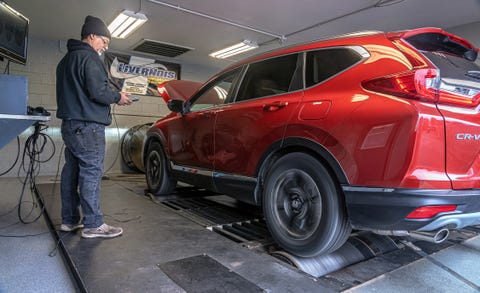
Marc Urbano Car and Driver
Even as it's sucking down as much as 18.5 psi of boost, the CR-V's 1.5-liter inline-four isn't interested in 93 octane. Honda asks for 87 octane and makes no claims that raising the fuel octane will lift performance. Based on our testing, premium fuel might as well not exist in the CR-V's world.
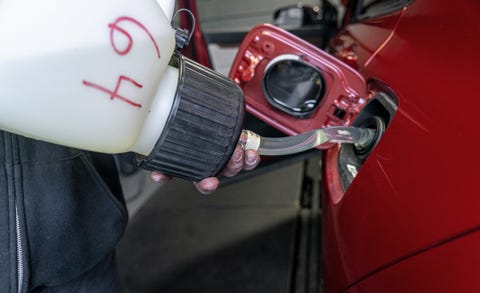
Marc Urbano Car and Driver
We could see this coming. During a similar Car and Driver test 18 years ago, an Accord powered by a 3.0-liter V-6 made more power and accelerated quicker on regular fuel than on premium. The modern CR-V, with half the displacement but rated at just 10 fewer ponies, makes the same argument: don't waste your money on premium. Switching from 87 octane to 93 yielded a 7-hp gain on the dynamometer, but that advantage was lost in the noise at the track. There, the CR-V's zero-to-60-mph and quarter-mile times both tracked a tenth of a second slower on the expensive stuff. While fuel economy at 75 mph ticked up from 27.3 mpg to 27.6 mpg on premium, that's a 1 percent improvement for a 21 percent higher cost.
Honda built its reputation on a line of unassuming, egalitarian motorcycles in the '60s. Nearly 60 years later, the company's identity is still predicated on the same sensible and modest ethic, right down to the fuel that you put in the tank.
BMW M5 Competition

Marc Urbano Car and Driver
The mere thought of pumping regular unleaded into this $129,595 intercontinental ballistic missile felt wrong. BMW explicitly warns about engine damage from doing so, and while that seemed unlikely in such mild temperatures, using the cheap stuff would have been wildly out of touch with what an owner would do (at least until this M5 reaches its fourth owner sometime in 2036). BMW requires 91-octane fuel at a minimum, with 93 recommended, so we did just that, switching between the common forms of premium gas depending on which state you're in. Are Californians, with their watered-down premium, leaving something on the table? We wanted to know.
The dyno results shocked us. Not because of the 13-hp difference between 91 and 93 octane. No, that delta was in line with expectations. Our jaws were left hanging by just how much power and torque we measured. On either fuel, the über 5-series is seriously underrated. While BMW claims 617 horsepower at the crank, the dyno reports it makes that much at the wheels (after driveline losses) on 93-octane premium. And both fuels produced significantly more torque than BMW's advertised 553 lb-ft.
The higher-octane fuel trimmed a single tenth of a second across all of the M5's acceleration times. That results in a time-bending 2.7-second slingshot to 60 mph and 10.8 seconds through the quarter-mile and lands this five-seat, 4246-pound four-door squarely in the realm of supercars. The BMW also claimed the largest fuel-economy margin in the test, but the 0.7-mpg difference favored the lower octane. The M5 Competition stands as proof that the octane rating does make a difference, although in the case of these two premium fuels, if you're forced to use 91 octane, you're hardly missing out.
Ford F-150
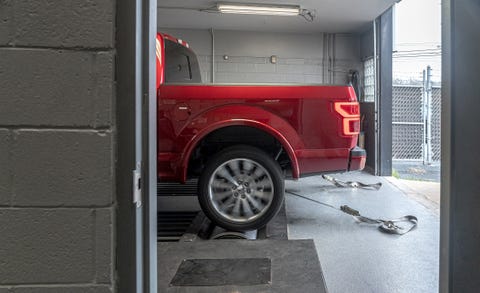
Marc Urbano Car and Driver
At 128.7 horsepower per liter, the F-150's high-output V-6 engine is more power dense than a Porsche 911 Carrera's twin-turbo flat-six. Naturally then, the Ford hauls ass as effortlessly as it hauls a half-ton of manure. When fed 93 octane, this 5594-pound, self-propelled wheelbarrow will crash 60 mph in 5.3 seconds.
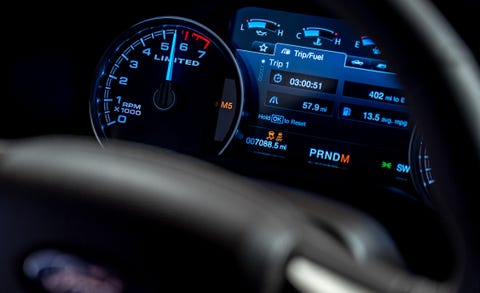
Marc Urbano Car and Driver
Power at the wheels dropped from 380 to 360 horsepower with the change from 93 to 87 octane. That difference seemed to grow, and we could even feel it from the driver's seat at the test track. Compared with premium fuel, regular feed sapped the F-150's urgency both leaving the line and in the meat of the tach sweep. The rush to 60 mph softened to a still-blistering 5.9 seconds, and the quarter-mile stretched from 14.0 to 14.5 seconds, with trap speed falling 4 mph. Tapped into the Ford's CAN bus, we recorded a peak boost pressure roughly 1.9 psi lower during acceleration runs on regular gas, down more than 10 percent compared with the 18.1-psi peak on premium. The high-octane gas also helped when soft-pedaling the accelerator, elevating 75-mph fuel economy from 17.0 to 17.6 mpg. That won't make a financial case for running 93 octane, but then you didn't buy the expensive engine as a rational choice. You can think of this EcoBoost engine's more aggressive high-octane tune as a sort-of sport mode that can be switched on or off with every fill of its 36.0-gallon tank.
Dodge Charger R/T
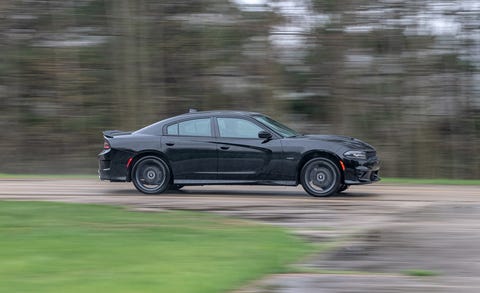
Marc Urbano Car and Driver
We always assumed that mid-grade fuel existed chiefly to bilk a few more dimes from the type of people who ask the dealer to undercoat their car. Turns out it's also for owners of Fiat Chrysler's Hemi 5.7-liter V-8, as the company recommends 89-octane fuel for this engine. With no mention of that on the fuel-filler door, though, a driver would have to read the manual to know. And we don't see that happening in the case of this particular Charger R/T, which was cherry-picked from the Detroit airport rental lot for our test. With just 600 miles on the odometer and looking as if it had already been hand washed with 80-grit sandpaper a half-dozen times, this Charger is unlikely to ever taste 93 octane again.

Marc Urbano Car and Driver
Oh well. The Charger's manual says 87 octane will provide "satisfactory fuel economy and performance." In our testing, "satisfactory" proved to be nearly identical to how the car performed with premium gas. Similar to the BMW, the Dodge's gains on the dyno (14 horsepower and 23 lb-ft of torque) translated into negligible improvement in our real-world acceleration testing. Saddled with elephantine heft and eager to spin its rear all-season tires at launch, the Charger posted the same 4.9-second hustle to 60 mph on 87 and 93 octane. At triple-digit speeds, the higher power on 93 octane gave the Charger an advantage measured in tenths of a second. The Dodge also posted a 0.3-mpg improvement on premium with its average of 23.5 mpg. Just as important, the bellicose roar of the iron-block Hemi and the Charger's ability to reduce its rear tires to jungle-gym ground cover are unaffected by the fuel in the tank.
While Ford's EcoBoost F-150 stands out as an obvious exception, the Dodge Charger's numbers make for a tidy summary of our findings. If you buy fuel with an octane rating above the manufacturer's requirement, you're likely to feel it in your wallet more than the seat of your pants.
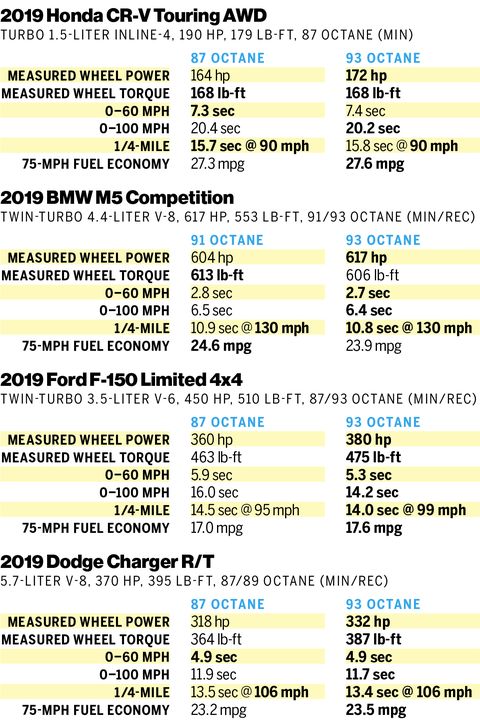
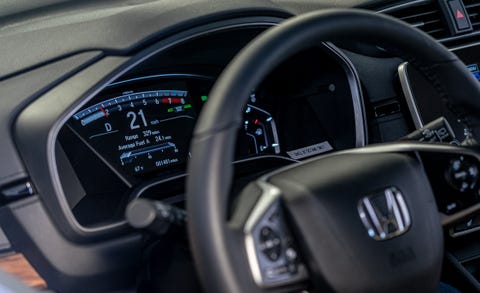
Marc Urbano Car and Driver
Knock Knock. Who's There? [No Answer.]
How your engine constantly invites and silences engine knock to estimate a fuel's octane rating.
Your car doesn't know the octane rating of the fuel in its tank. Instead, the engine controller calculates an inferred octane with closed-loop logic that continuously advances the ignition timing until it detects knock, which occurs when a portion of the fuel-air mixture ignites before the spark-plug-initiated flame front reaches it. The further the computer can advance the timing without provoking knock, the higher the octane rating.
During knock, the flame front travels through the combustion chamber up to 10 times quicker than the normal spark-initiated flame front. Left unchecked, these pressure waves can damage the head gasket, pistons, or cylinder head. But the occasional brief knock is a useful tool for checking that the engine is operating efficiently. It's detected with one or more knock sensors bolted to the block to sense the oscillations created by the pressure waves with a typical frequency between 7 and 16 kilohertz. Stephen Russ, senior technical leader for gas engines at Ford, says this normal knock is usually detected and addressed within one or two combustion cycles and poses no threat to the engine. —ET
This content is created and maintained by a third party, and imported onto this page to help users provide their email addresses. You may be able to find more information about this and similar content at piano.io
Source: https://www.caranddriver.com/features/a28565486/honda-cr-v-vs-bmw-m5-ford-f-150-dodge-charger/
0 Response to "Can I Put 100 Gas in My Car"
Post a Comment